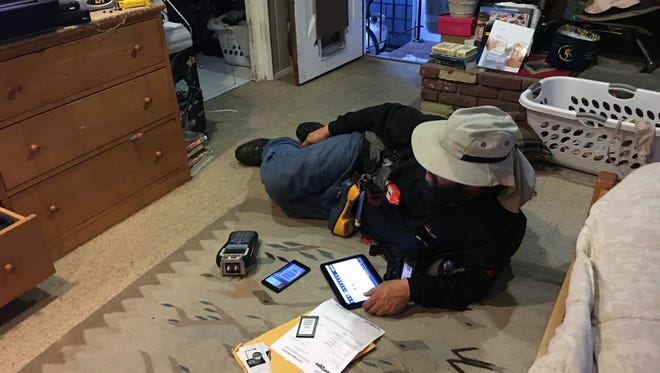Your cable is out and you want the technician to arrive and help you?
That might not be possible right now.
Due to the coronavirus and social distancing directives, cable firms will still send out a technician as a last resort, but they might not enter your home.
Cox Cable, which serves 19 states across the U.S., has stopped sending people for in-home visits, and instead has begun doing smartphone video conferences with customers, sometimes even from the truck outside their home, to troubleshoot.
Streaming: Sling TV is offering its best trial offer ever right now—but not for long
Annoyance!: Stop robocalls with free solutions from AT&T, Verizon, T-Mobile and Sprint
Cox is working with a company named Help Lightning, which says it can “provide remote assistance as though they’re working side-by-side.” Technicians can demonstrate by drawing on the screen and providing examples and directions on screen.
“When a technician arrives, he or she contacts the customer as normal, but asks if they would prefer to call, text and/or video chat,” says Cox spokesman Todd Smith.

Cox technicians will talk the customer through the steps needed to fix things, and if requested, show examples of what to do via the webchat.
Verizon has also stopped routinely sending technicians to the home. It has limited installs to just medical emergencies and “critical” installations. For other customers, Verizon has moved to remote video chats, similar to Cox.
There’s an app for that
Verizon began working this week with TechSee, a video chat app, to communicate, “while avoiding entering residences to maintain recommended social distancing guidelines,” says Verizon director of communications Adria Tomaszewski.
Customers connect by getting a text link from the technician, which they use to connect via their smartphone to start the video chat.
“The customer can share images of their on-premise equipment so the technician can help diagnose the problem and the customer can video chat with the technician while seeing the technician drawing or circling things on images of the customer’s equipment,” says Tomaszewski.
Many Verizon customers have complained on Twitter about their appointments being canceled at the last minute by Verizon.
“As a result of COVID-19, we are taking precautions to keep our employees and customers safe. At this time, our technicians will not be able to enter your home to install new services or do repair work,” Verizon’s support staff wrote to Twitter user Brian Fuentes on Monday.
Indeed, after this article was published, Kevin Mangold, who works for the National Institute of Standards and Technology wrote USA TODAY to tell of his woes getting Verizon to install internet services.
He had a scheduled install for April 12th, received a text Tuesday saying that all installs are postponed, so he contacted customer support.
He was told the appointment was not going to happen “leaving us without internet and therefore unable to do our jobs (I do IT related work supporting First Responders across the country and my wife works in Aviation Safety).”
He was not offered self-service or video chat, he says. “If Internet is an essential service, Verizon is certainly taking liberty with that term.”
At Comcast, the nation’s largest cable operator, technicians will still enter homes, but only after the technician puts on face covering and checks temperature before walking in. Still, Comcast is encouraging self-installations, with phone support.
Spectrum, the second largest cable operator, has stopped offering professional TV installations during this time, but will still enter homes to help with internet connectivity issues, says the company, following Centers for Disease Control recommendations on safety issues.
Frontier, which operates in 29 states, including California, Florida and Connecticut, says it still dispatches technicians to homes, but like Spectrum and Comcast is trying to do as much work as possible outside the home. “Once exterior work is completed, a tech confirms services are connected and then assists customers with any final setup, communicating nearby from a prescribed distance,” the company says.
AT&T, says it’s still making in-person visits because “connectivity is too crucial for us to impose a nationwide halt to the work our technicians are doing.”
Follow USA TODAY’s Jefferson Graham (@jeffersongraham) on Twitter

